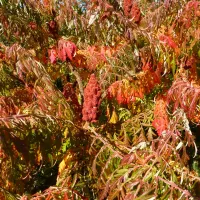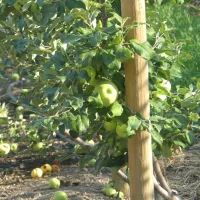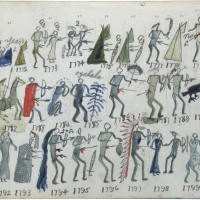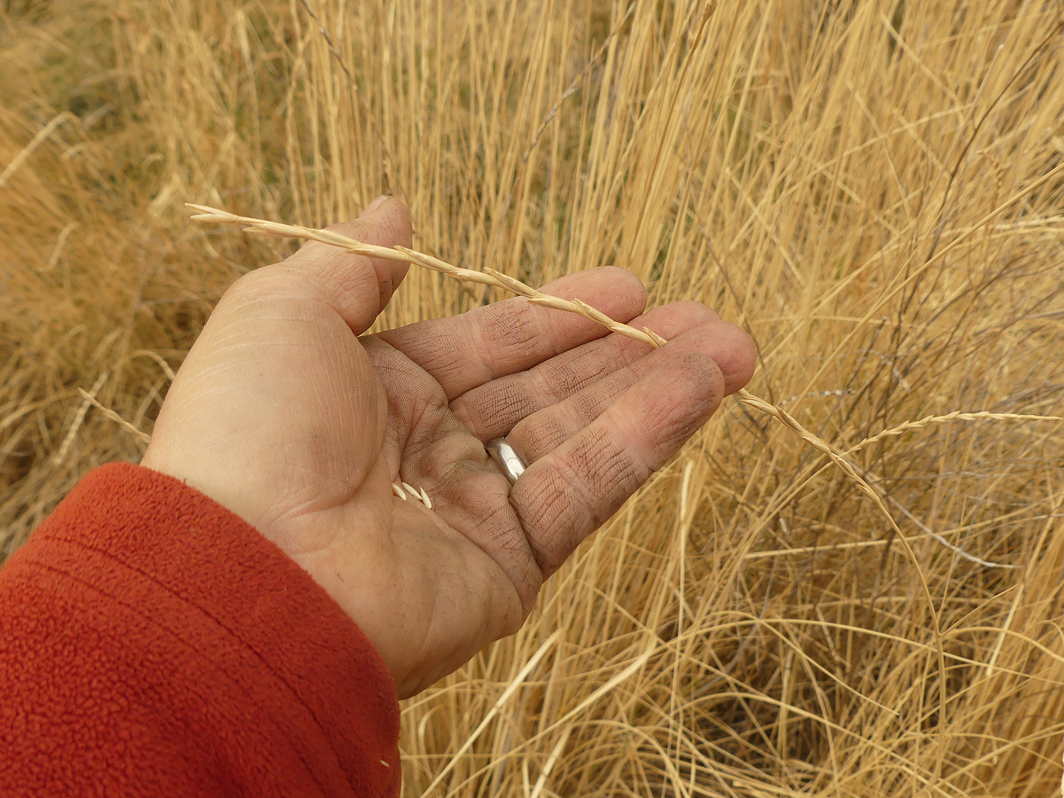Imagine writing a language that meets the shape of the land.

It is built on deep bones, such as the Arrowstone volcanic flows below: both vertical and horizontal at the same time, a pattern which creates breakage and singular monumental boulders. Note how it creates as well patterns that recall animal heads to human eyes, such as the pale coyote in the centre of the image, with a big nose. These are all part of the grammar of this land.

When the bones carry a skin, they retain vertical and lateral elements, light and shadow and clotted bits of particular narrative interest.

The skin of the earth is sliding in musical intervals off of her bones. So, a language that matches this land has that: concentrations of revealed structure and sliding musical notes over them. It is not going to be a language which sets out journeys, as English does, proceeding from thing to thing or thing to idea by the means of energized verbs. In this language, the verbs carry great energy, but it goes nowhere, only deeper into the land.

This language has the capacity to allow vertical energy to dominate, although when it does humans will recognize it as consciousness, or at least with will and intent.

These musical chains of vertical patterns dominate over lateral ones caused by both slumping and the deer that create precisely-angled trails across it.

In other words, in this landscape a grammar of earth is going to include the movements of animals. It gives the land animal shape, or, rather, a shape common to it and to animals.

Elephant Hill
Although this language is a human reading of deep structure, what else can a language be, if spoken by humans? It is a grammar made out of vertical and horizontal plains of hide and skin.

Often, these energies and the things and processes they inhabit are quite complex, and layered over each other:

This layering, this incorporation of the element of time within the grammar, binding both thing and process, is a prerequisite for a language in this place:

The conditions for narrative, however, are created by these interwoven materializations. Just as the grammar allows for human interpretation, it allows as well for interpretation by sun, snow, water, wind and fire. They are equal to human participation. You can read them working out their relationships below, in a language of trees. The trees have a narrative, as do people. Yes, people are words spoken by this language, just as these other forces are. That means that human self-identities are going to be within things in this language. One will read one’s self, rather than impose it. In this language, that would be absurd.

This layering is present in large and small lateral syntaxes, with old lake bottoms rising in the rhythm of lifting and falling ice dams long ago.

Weaving and interplay of elements is a function of this language, as verticality slumps against the resistance of the grammar to vertical movement. The lateral movement of this grammar perennial attempts to slow narrative into place.

The pattern is the same, whether expressed in fine gradations (above) or large ones (below.)

Fire has swept through this language, in lines of lateral (above) and vertical (below) flow.

Note the footprints of deer below, realigning the horizontal patterns after erosion.

Even the upthrust, narrative erratics scattered across the landscape exist within a slow, embedded time. There is movement everywhere in this landscape, but it is on a far slower and far more powerful scale…

… than a Canadian one, which sees this grammar as a space to be bridged by wire, and romantically names this interplay of grammatical elements and the narratives they channel “erosion.”

On the most intimate level of this grammar, fire and the rain that follows weave the vertical and horizontal grammars, the grammars of narrative and stillness, together.

Note how in the foreground, a flow of mud has cascaded through the ridge of unburnt grass mid-image, but is quickly diverted to the side by first grass and then a deer trail that was itself constrained by grass — arranged in an evenly-spaced pattern with no narrative of its own. That is the nature of this language. Those are some of the ways in which this language works. Note how the bones of the earth break apart to make space for this interplay. This interplay can lead to waterfalls…

… which by their value and their hidden nature are expressions of human identity.

The land is always speaking this identity.

If you find yourself lost, look for a tree. It will speak to you where in the language you are.

It does not tell a story. A story is a spatial relationship created by humans: movement subsumed not into Earth but into will.

Tomorrow, let’s look at what happens when a language at one with the earth is used to speak of this spatial relationship or story. Until then, a bit of story from the Arrowstone for you to read.

~
All images from the Thompson Grasslands.
Categories: Earth, Erosion, First Peoples, Gaia, Geology, Grasslands, Land, Nature Photography, Water














This idea of language and landscape is so interesting. Thanks for explaining so clearly what I have been pondering.
LikeLike
You are so kind! I feel I was not 10% so clear as I wanted to be! I’m going to keep trying, though!
LikeLike
In Iqaluit I saw the bones of the land revealed.
LikeLike
Very cool. Sounds like a place worth the trip.
>
LikeLike